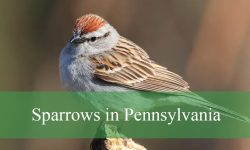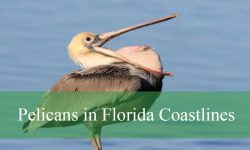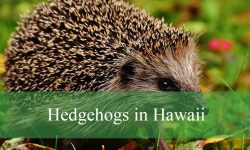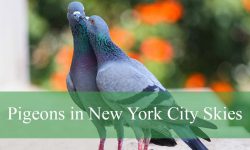Birdwatchers and nature enthusiasts find exploring the diverse types of ducks in Oregon a rewarding experience. Oregon’s varied habitats, from lush wetlands to coastal bays, create ideal environments for a wide range of duck species. Learning to identify these beautiful waterfowl adds depth to any outdoor adventure, for beginners and experts alike.
This guide presents 31 types of ducks in Oregon, complete with pictures and detailed identification tips to help spot and distinguish each species. From the familiar Mallard to rare visitors like the Baikal Teal, Oregon’s duck population offers fascinating variety and color. Understanding their unique features and behaviors enhances birdwatching skills.
Local ponds, national wildlife refuges, and coastal estuaries are great places to encounter many different types of ducks in Oregon. Use this comprehensive list to dive into the vibrant world of Oregon’s waterfowl and enjoy a richer outdoor experience.
Different Types of Ducks in Oregon
Mallard (Anas platyrhynchos)
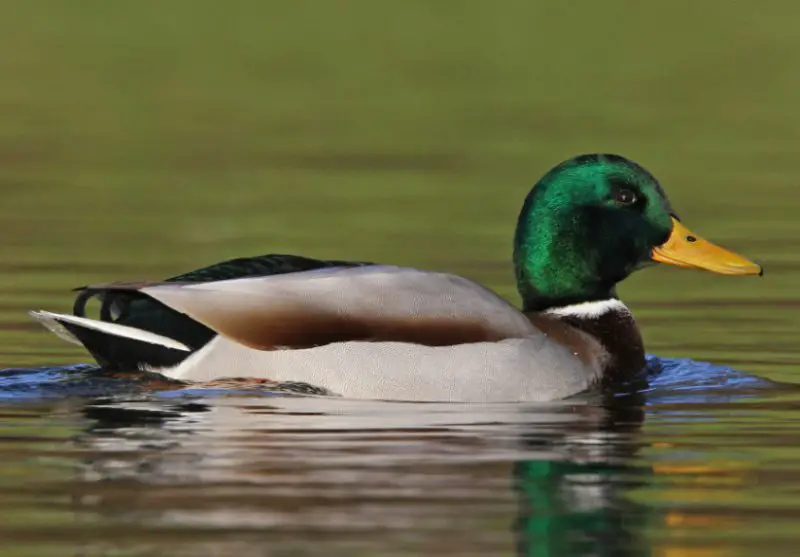
The Mallard is the most widespread and familiar duck species in Oregon and across North America. It is found year-round throughout the state, from coastal wetlands and rivers to urban parks, ponds, and farmlands. This species adapts well to human-modified environments and is often seen in city lakes and golf course ponds. Mallards are particularly common in the Willamette Valley, the Columbia River Basin, and Klamath Basin, where they breed and overwinter in large numbers.
Male Mallards are easy to recognize with their iridescent green heads, yellow bills, narrow white neck rings, and chestnut-brown chests. Their bodies are primarily gray, and they show a purplish-blue speculum (wing patch) bordered in white, especially noticeable in flight. Females are mottled brown with an orange bill marked with black, and they also show the same wing speculum. The sexes are similar in size, with a robust, rounded body and short tail.
Mallards are vocal birds. The female produces the classic loud “quack” that is commonly associated with ducks, while males have a quieter, raspier call. They feed by dabbling on the surface or tipping forward in shallow water to reach aquatic vegetation. Fun fact: Mallards are the wild ancestors of most domestic duck breeds, and they often hybridize with other duck species, creating fascinating plumage variations in the wild.
Northern Pintail (Anas acuta)
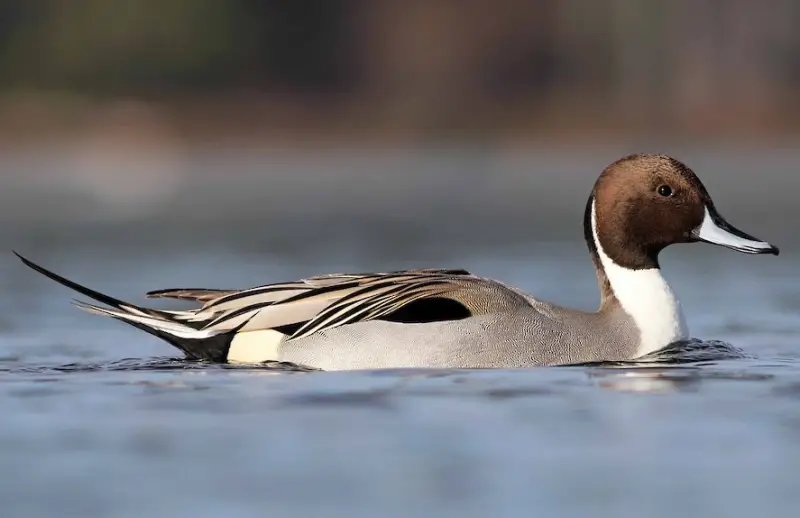
The Northern Pintail is an elegant and streamlined duck that migrates through Oregon in large numbers and winters extensively across the state, especially in open wetlands and flooded fields. They favor shallow freshwater and brackish habitats, including coastal estuaries, inland marshes, and rice fields. Pintails can be seen in areas such as the Malheur National Wildlife Refuge and the Lower Klamath Basin during migration and winter.
Males are distinguished by their slender necks, chocolate-brown heads, white chests with a vertical white stripe running up the neck, and long, pointed central tail feathers, which give the species its name. Their bodies are gray with black and white accents. Females are more muted, with a mottled brown appearance and a slim, graceful build. Both sexes have blue-gray bills and grayish legs. In flight, pintails appear swift and agile with long necks and tails.
Their vocalizations include a soft, whistling “prreep” from males and a raspy “quack” from females. Pintails are among the earliest ducks to migrate in spring and fall and are capable of long-distance flights, sometimes migrating thousands of miles. A fun fact: Northern Pintails are known for their fast, agile flight and often fly in small flocks or large V-shaped formations during migration.
American Wigeon (Mareca americana)
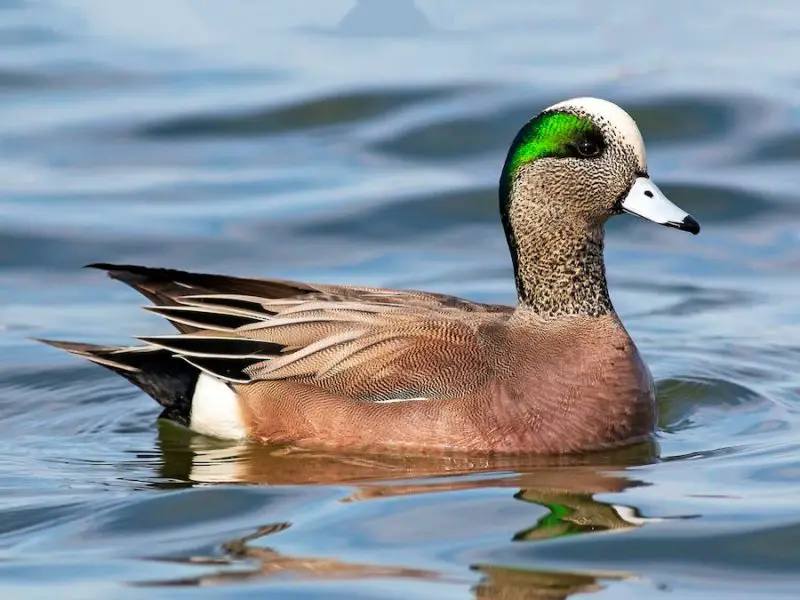
The American Wigeon is a common winter visitor and migrant in Oregon, favoring freshwater wetlands, lakes, estuaries, and agricultural fields. It is particularly abundant in places like the Klamath Basin and Sauvie Island Wildlife Area. This species grazes on aquatic vegetation and is often seen feeding on land in open fields, giving it a reputation for foraging habits that differ from other ducks.
Males are easily identified by their rounded pinkish-brown bodies, pale gray heads with a bright white crown, and a shimmering green stripe behind the eyes. Their blue-gray bills have a black tip. Females are more subdued in color, with brown bodies and grayish heads, but both sexes show white patches in their wings that are visible in flight. They have compact, rounded bodies and relatively short necks.
American Wigeons are known for their high-pitched whistling call, often described as a “whee-whee-whee,” which is most commonly produced by males. A fun behavioral trait is their tendency to steal food from diving ducks like coots by snatching vegetation as the other bird surfaces—a form of kleptoparasitism. They are also among the most vegetarian of dabbling ducks, feeding heavily on grass and aquatic plants.
Gadwall (Mareca strepera)
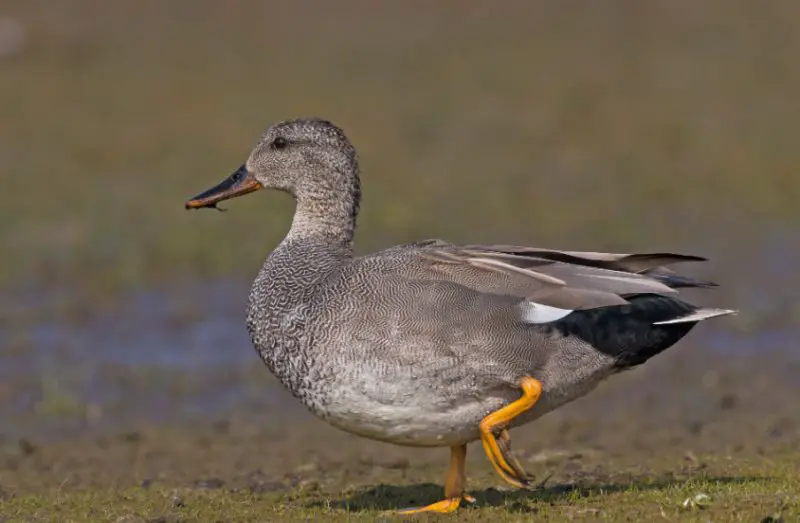
The Gadwall is a subtly beautiful and relatively common dabbling duck in Oregon, found mostly during migration and winter. It prefers quiet marshes, ponds, and shallow lakes with ample emergent vegetation, often sharing habitat with Mallards and American Wigeons. Key locations include the Columbia River region, Klamath Marshes, and agricultural wetlands throughout the state.
Males are understated in color but finely patterned with gray and brown feathers, a black rear end, white belly, and a white wing patch (speculum) that is sometimes hidden at rest. Females resemble female Mallards but are sleeker with thinner bills and lack the orange coloration. Both sexes have slender gray bills and can be distinguished by their more refined appearance compared to other dabbling ducks.
Gadwalls are not particularly noisy but produce low, croaking grunts and short quacks. They are unique among dabbling ducks for their occasional diving behavior to reach submerged vegetation. A fun fact: despite their plain look, Gadwalls are among the most aggressive dabblers during the breeding season and are often seen defending their mates or chasing off rivals with surprising intensity.
Northern Shoveler (Spatula clypeata)
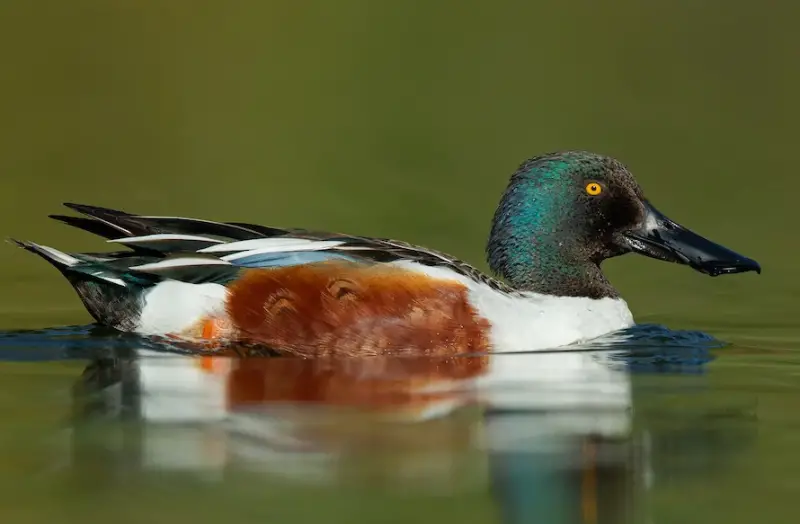
The Northern Shoveler is unmistakable thanks to its oversized, spoon-shaped bill, which it uses to filter food from water. This species is fairly common in Oregon during migration and winter, inhabiting shallow marshes, flooded fields, and temporary wetlands across the state. Look for them in large groups in places like Summer Lake Wildlife Area and the Lower Klamath Basin.
Breeding males are striking with glossy green heads, bright yellow eyes, white chests, and rusty-colored flanks. Their large black bills and green speculums bordered by white make them easy to identify. Females are speckled brown with orange bills marked in dark spots, and both sexes show blue forewings and green secondaries in flight. Their wide bills are equipped with fine comb-like structures called lamellae that help them strain tiny invertebrates and seeds from the water.
Northern Shovelers are relatively quiet, but females give soft, nasal “quack” calls, and males produce clucking and rattling sounds. They often spin in circles while feeding as a group, stirring up sediment and filtering the water. A fun fact: their unique feeding technique allows them to exploit habitats with shallow, nutrient-rich waters where other ducks may be less efficient feeders.
Green-winged Teal (Anas crecca)
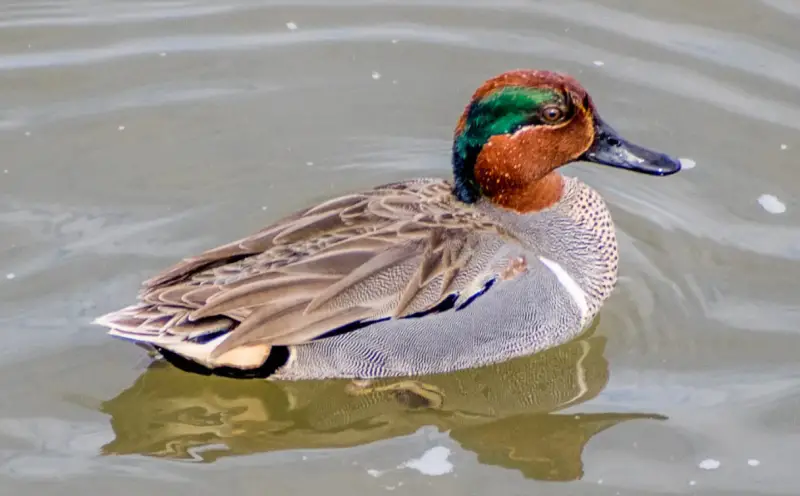
The Green-winged Teal is the smallest dabbling duck in North America and is commonly found throughout Oregon during migration and winter. It prefers shallow wetlands, mudflats, and flooded fields, especially in the Willamette Valley and Klamath Basin. These ducks often gather in large flocks, frequently associating with other small dabblers.
Males are colorful and compact, with a chestnut head, a glossy green patch extending from the eye to the back of the head, a buffy vertical stripe on the shoulder, and gray sides. Females are mottled brown and resemble female Mallards but are noticeably smaller and more delicate. Both sexes have a bright green speculum on their wings, visible in flight or when preening.
Their call is a distinctive whistled “preep-preep,” particularly from the males, while females give a soft quack. Green-winged Teals feed by dabbling and are often seen tipping forward in shallow water. A fun fact: despite their tiny size, these ducks are hardy and one of the earliest migrants, often arriving in Oregon by late summer and staying through early spring.
Cinnamon Teal (Spatula cyanoptera)

The Cinnamon Teal is a strikingly colorful duck native to the western United States, including Oregon. It breeds in shallow freshwater wetlands, marshes, and ponds, especially in eastern and southern Oregon. Look for them in places like Malheur National Wildlife Refuge and Summer Lake during spring and summer.
Males are unmistakable with their rich cinnamon-red bodies, red eyes, and large spatula-shaped bills. Their wings display a blue shoulder patch and a green speculum in flight. Females are mottled brown and resemble female Blue-winged Teal but have larger bills and warmer-toned plumage. Both sexes share the large, flat bill characteristic of shovelers.
Cinnamon Teals are typically quiet, but males emit a low, whistled “peep” during courtship, and females give soft quacking calls. These ducks forage in shallow water for aquatic invertebrates and vegetation. A fun fact: Cinnamon Teals are one of the few duck species restricted mostly to western North America, and their breeding range overlaps with the Blue-winged Teal, with which they occasionally hybridize.
Blue-winged Teal (Spatula discors)
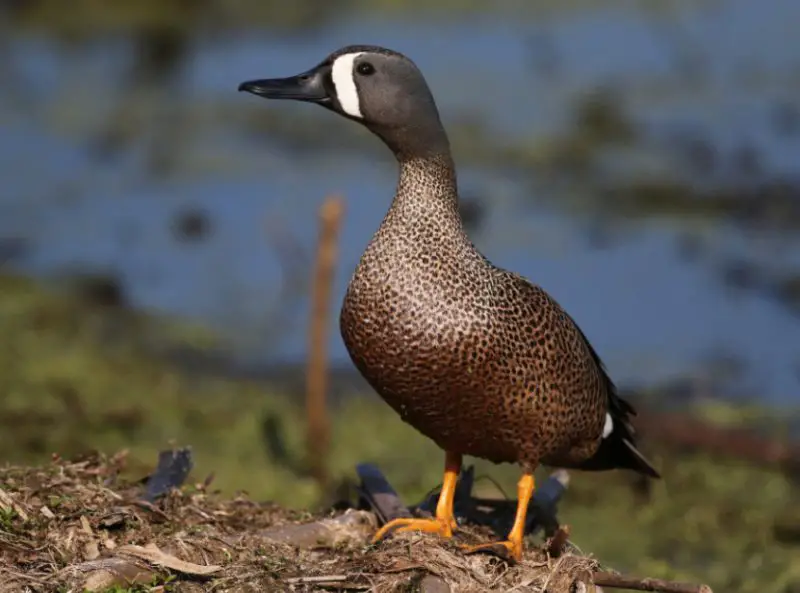
The Blue-winged Teal is a small, graceful duck found in Oregon during migration and occasionally breeding in the eastern and southeastern parts of the state. They favor shallow wetlands, prairie ponds, and flooded grasslands, often arriving in spring before most other duck species.
Males are sleek with powdery blue shoulder patches, a white crescent on the face in front of the eye, and spotted brown bodies. Females are mottled brown and similar to Cinnamon Teal females but tend to be smaller with smaller bills and cooler tones in their plumage. Both sexes show the characteristic blue wing patch when in flight or preening.
These ducks are known for their soft, high-pitched “peep” from the males, while females make gentle quacking sounds. Blue-winged Teals are among the earliest ducks to migrate in both spring and fall, often departing Oregon by late summer. A fun fact: they are one of the most abundant dabbling ducks in North America and can migrate as far south as South America for the winter.
Wood Duck (Aix sponsa)
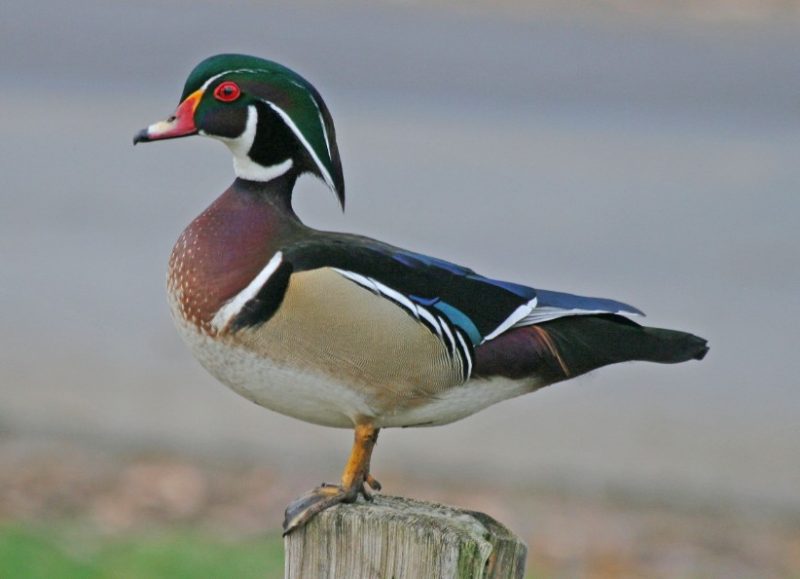
The Wood Duck is one of the most beautiful and unique waterfowl in Oregon, commonly found in wooded swamps, rivers, ponds, and lakes with abundant tree cover. They are cavity nesters and breed throughout the state, especially in western Oregon and along forested waterways.
Male Wood Ducks are stunning, with iridescent green and purple heads, bold white facial stripes, chestnut chests, and multicolored flanks. Females are elegant with gray-brown plumage, a white teardrop eye-ring, and a crested head. Both sexes have a square tail and long body, giving them a distinctive silhouette in flight.
They produce high-pitched, rising whistles and squeals, especially when alarmed. Unlike most ducks, Wood Ducks perch in trees and nest in tree cavities or nest boxes. A fun fact: ducklings leap from their high nest cavities shortly after hatching, bouncing safely to the forest floor or water below. This remarkable behavior makes them a favorite among birdwatchers and conservationists alike.
Ring-necked Duck (Aythya collaris)
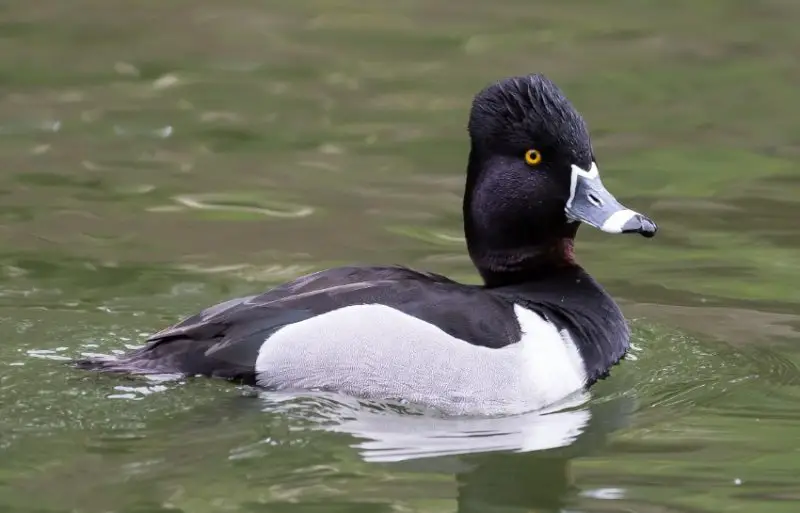
The Ring-necked Duck is a medium-sized diving duck commonly found in Oregon during migration and winter. It frequents freshwater lakes, ponds, and slow-moving rivers, often in the company of other diving ducks like scaup. In Oregon, they are most commonly seen in western lowlands and southern reservoirs.
Males are sleek and glossy with black backs, gray sides, a striking white ring on the bill, and a faint chestnut collar around the neck (which is rarely visible and often overlooked). Females are brown with a distinctive white eye ring and a pale face. Both sexes have peaked heads, which help distinguish them from similar-looking species.
Ring-necked Ducks make soft “tu-tu-tu” calls and are relatively quiet compared to dabbling ducks. They forage by diving underwater for submerged vegetation and invertebrates. A fun fact: despite their name, the ring around their neck is barely visible, and they are more easily identified by the bold white ring near the tip of their bill.
Lesser Scaup (Aythya affinis)

The Lesser Scaup is one of the most common diving ducks in North America and is frequently observed in Oregon during fall, winter, and migration periods. These ducks prefer lakes, rivers, reservoirs, and coastal estuaries, especially in areas with open water and abundant aquatic vegetation. They are widespread throughout Oregon during the nonbreeding season.
Males have a glossy black head with a purplish sheen, a light gray back, and black chest and tail. Females are brown with a distinctive white patch around the base of the bill. Both sexes show a pale blue bill and white wing stripe, but their slightly peaked head shape helps distinguish them from their close relative, the Greater Scaup.
Their vocalizations are subtle and include soft whistles from males and low grunts from females. Lesser Scaup are known for diving underwater to feed on aquatic invertebrates and plant matter. A fun fact: despite being abundant, populations of Lesser Scaup have declined in recent decades, and their exact causes remain an ongoing subject of research.
Greater Scaup (Aythya marila)

The Greater Scaup is a robust diving duck that closely resembles the Lesser Scaup but is generally less common in Oregon. It prefers large bodies of water, including coastal bays, estuaries, and large inland lakes. In Oregon, they are primarily found along the coast and larger lakes in the winter months.
Males have a rounded green-glossed head, bright white sides, and a black breast and tail. Females are chocolate brown with a lighter face and a white area at the base of the bill, similar to female Lesser Scaup. One key ID feature is their more rounded head and broader white stripe along the wing that extends into the primary feathers.
Greater Scaup are generally quiet, although males may emit low whistles during courtship. These ducks dive deeply for mollusks, insects, and aquatic plants. A fun fact: Greater Scaup are one of the few diving ducks that routinely overwinter offshore in marine environments, especially in coastal regions like Oregon’s bays and inlets.
Bufflehead (Bucephala albeola)
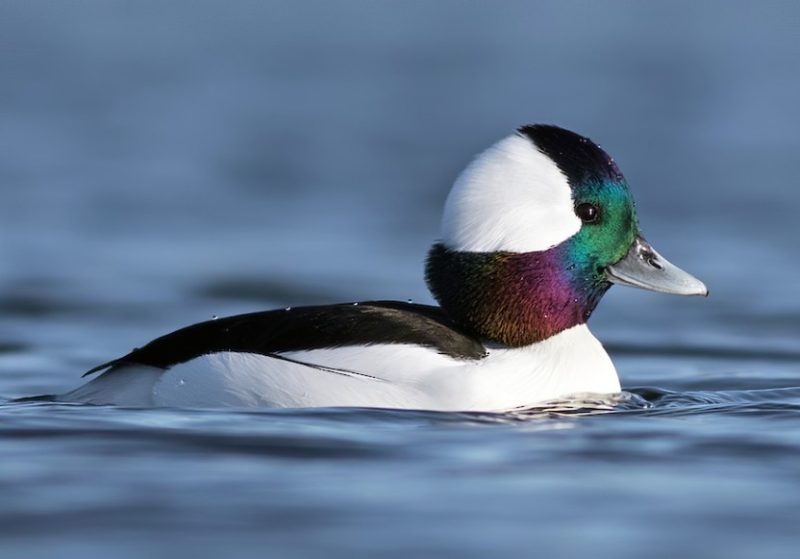
The Bufflehead is a small, energetic diving duck often seen in Oregon’s lakes, ponds, and protected coastal waters in winter. They breed in Canada and Alaska but spend the colder months in the western United States, including throughout western Oregon.
Males are striking with a large white patch on the back of the head, contrasting with an iridescent black-green-purple head, white body, and dark back. Females and immature males are gray-brown with a smaller white cheek patch and darker head. Their small size and rapid diving behavior make them easy to recognize on the water.
Buffleheads are relatively quiet, but males produce soft squeaking calls during courtship. They feed by diving and foraging for aquatic insects, crustaceans, and mollusks. A fun fact: Buffleheads nest almost exclusively in old Northern Flicker woodpecker cavities, making them one of the few ducks highly reliant on existing tree holes for reproduction.
Common Goldeneye (Bucephala clangula)
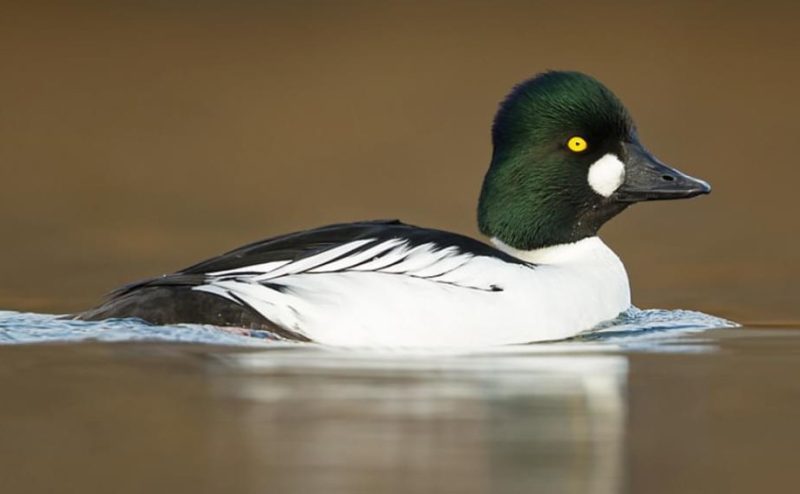
The Common Goldeneye is a medium-sized diving duck that winters throughout much of Oregon, especially on large lakes, rivers, and coastal bays. They breed in forested areas of Canada and Alaska and migrate to the Pacific Northwest for winter.
Males are bold and contrasting with a green-black head, a round white spot between the eye and bill, and a mostly white body with black on the back. Females are gray-bodied with brown heads and a distinctive yellow-tipped bill. Their bright golden eyes give the species its name and are visible even at a distance.
These ducks produce a variety of vocalizations, with males giving high-pitched squeaks and whistling wingbeats during flight. They are powerful divers and feed on crustaceans, insects, and small fish. A fun fact: Common Goldeneyes are known for their dramatic courtship displays, which include head tossing and splashy dives, often performed in groups of competing males.
Hooded Merganser (Lophodytes cucullatus)
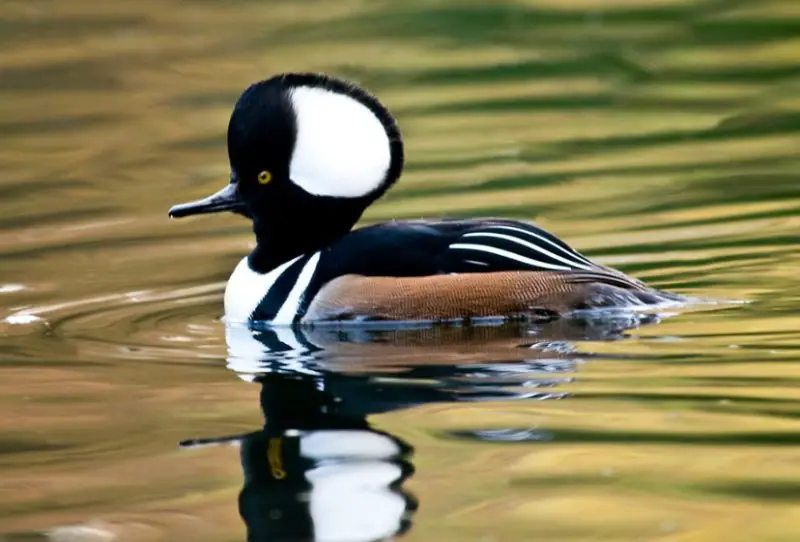
The Hooded Merganser is a small, forest-loving diving duck often seen on wooded ponds, slow streams, and rivers throughout Oregon. Though more secretive than some species, they are year-round residents in western Oregon and breed in tree cavities near water.
Males are instantly recognizable with a black head adorned by a large white, fan-shaped crest that they can raise or lower. Their body is black and white with cinnamon flanks. Females are brownish with a distinct, bushy reddish-brown crest. Both sexes have thin, serrated bills adapted for catching fish and aquatic prey.
They produce low, frog-like croaks and whistles, especially during courtship. Unlike dabbling ducks, Hooded Mergansers dive and pursue prey underwater using their excellent vision. A fun fact: the Hooded Merganser’s eyes can adjust their focus underwater, giving them a sharp advantage when fishing beneath the surface.
Common Merganser (Mergus merganser)

The Common Merganser is a large, elegant diving duck commonly seen on rivers, lakes, and reservoirs across Oregon, especially in forested and mountainous regions. They breed in cavities near freshwater bodies and are present year-round in western Oregon, while they appear in greater numbers during winter throughout the state.
Males are striking with gleaming white bodies, dark green heads, and slender red bills. Females are gray with reddish-brown heads and a shaggy crest at the back. Both sexes have long, narrow bills with serrated edges designed for grasping slippery prey, especially fish.
Common Mergansers are relatively quiet, but females may emit croaks or growls, especially near the nest. These ducks are powerful swimmers and often dive for fish, crustaceans, and aquatic insects. A fun fact: after hatching, chicks jump from their nest high in tree cavities and follow their mother immediately to water—sometimes walking great distances to find it.
Red-breasted Merganser (Mergus serrator)
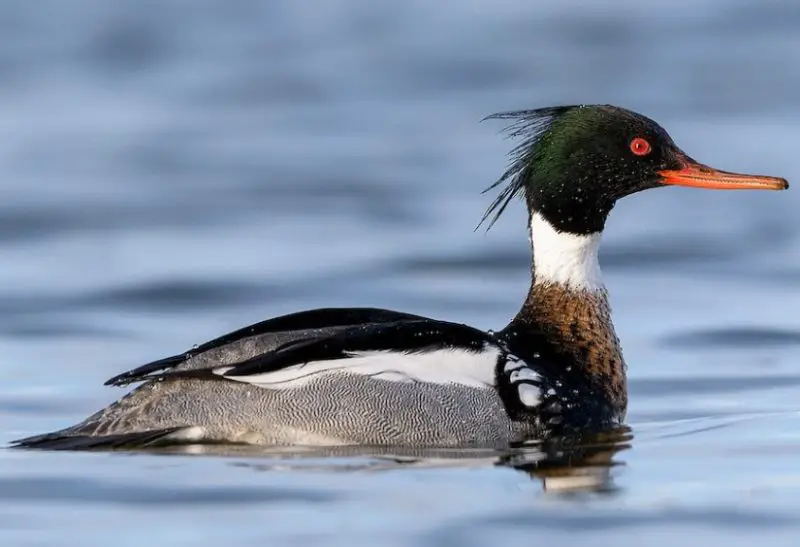
The Red-breasted Merganser is a slender, fast-flying sea duck that winters along the Oregon coast and can also be found inland during migration. They prefer saltwater bays, estuaries, and large freshwater lakes and are often seen diving for fish in small groups.
Males have spiky crests, greenish-black heads, a red bill, and a rusty-colored chest band with fine white streaks. Females have reddish heads with ragged crests, gray bodies, and a thinner red bill. Both sexes have long, streamlined profiles, ideal for diving and chasing fish underwater.
These ducks are more vocal than many diving species. Males produce rattling, croaky calls during displays, while females may quack or grunt. Red-breasted Mergansers are among the fastest flying ducks, reaching speeds up to 80 mph. A fun fact: they often hunt cooperatively in small groups, herding fish toward shallow water before diving to capture them.
Redhead (Aythya americana)
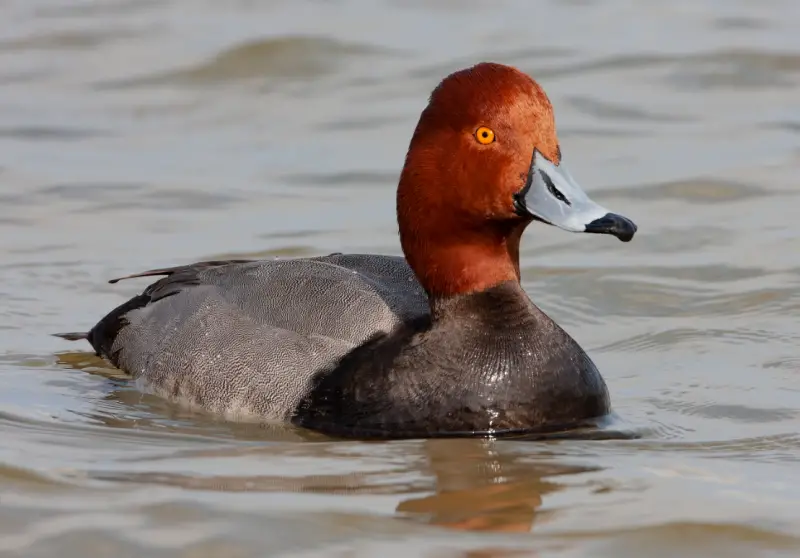
The Redhead is a medium-sized diving duck that winters across much of Oregon, especially on lakes, marshes, and reservoirs. While most breed in prairie wetlands farther east, large numbers migrate through or overwinter in the Pacific Northwest.
Males are handsome with a coppery-red head, black breast, gray back, and blue-gray bill with a black tip. Females are uniformly brown with lighter faces and the same distinctive bill pattern. Both sexes have a smooth, rounded head profile that helps distinguish them from similar species like Canvasbacks.
Redheads are relatively quiet, but males may emit soft mewing or catlike calls during courtship. They often associate with other diving duck species and may hybridize with Canvasbacks. A fun fact: Redhead hens frequently lay eggs in the nests of other ducks (a behavior known as brood parasitism), even among other Redheads or species like Ruddy Ducks.
Canvasback (Aythya valisineria)
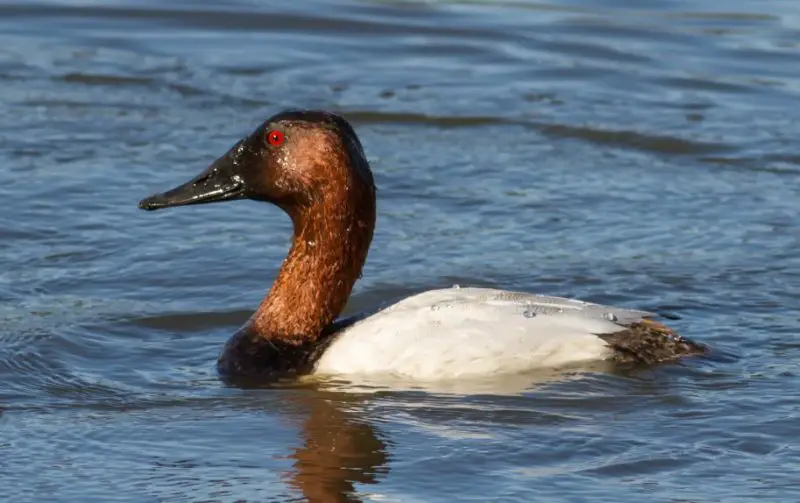
The Canvasback is a regal diving duck known for its sleek profile and preference for deep-water lakes and marshes. Though less common than Redheads, they can be found in Oregon during migration and winter, especially in large freshwater wetlands.
Males are distinctive with a chestnut-red head and neck, black chest, and white back and sides—resembling a canvas-colored body, hence the name. Females are pale brown with a similar sloping forehead and long, black bill. Their head shape is often the best clue for identification, appearing more wedge-like than other ducks.
Canvasbacks are generally silent, but males may emit low croaks and grunts in courtship. They dive to feed on aquatic plants, particularly the roots of wild celery (Vallisneria), which is a preferred food. A fun fact: the Canvasback is North America’s largest diving duck and has a fast, direct flight pattern with strong wingbeats.
Ruddy Duck (Oxyura jamaicensis)
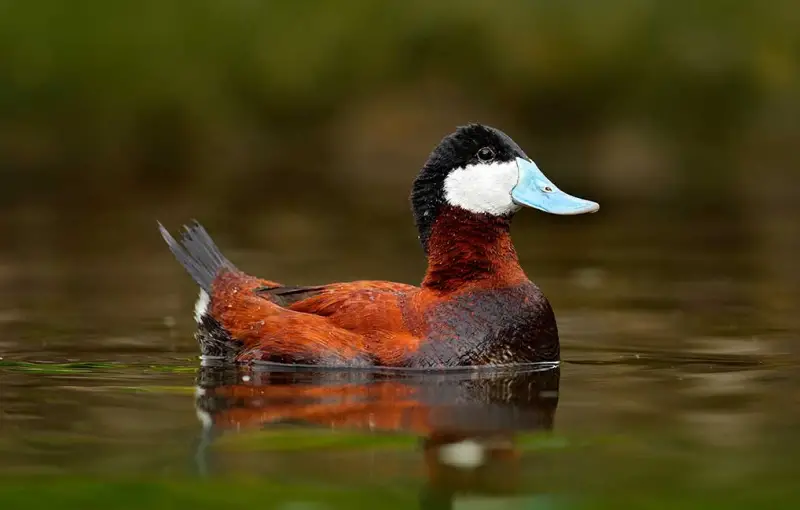
The Ruddy Duck is a small, stocky diving duck known for its comical appearance and energetic behavior. It is a year-round resident in parts of Oregon, especially in the eastern and southern parts of the state, where they breed in dense marshes and wetlands.
Males in breeding plumage are unmistakable with a sky-blue bill, bright chestnut body, and stiff, upright tail often held at an angle. In nonbreeding season, males and females are more subdued in color—grayish-brown with a dark cap and lighter cheek patch—but still show the characteristic spiky tail.
Though usually silent, males produce a unique “drumming” sound by rapidly beating their chest with their bill during courtship. Ruddy Ducks dive for aquatic insects, seeds, and vegetation. A fun fact: they’re highly aggressive and territorial during the breeding season, and despite their small size, they can fend off larger waterfowl from their nesting areas.
Surf Scoter (Melanitta perspicillata)
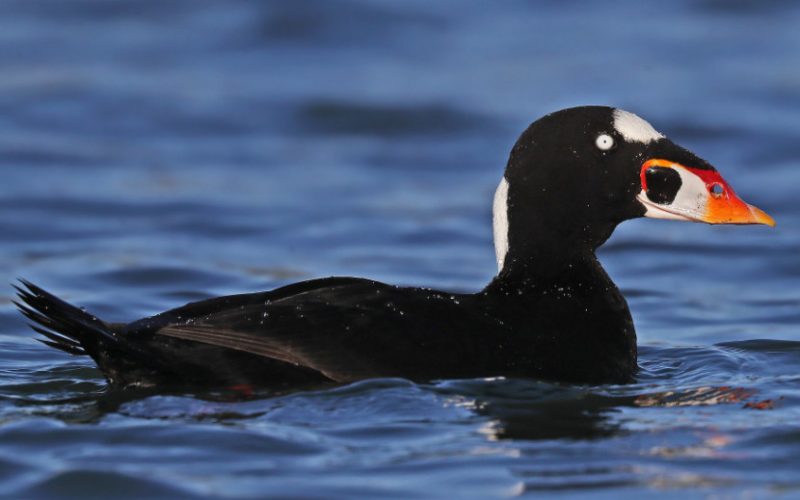
The Surf Scoter is a stocky sea duck most commonly found along the Oregon coast in fall and winter. They gather in large flocks on coastal bays and nearshore waters, diving for mollusks, crustaceans, and small fish. Although less frequently seen inland, a few may visit large reservoirs or lakes during migration.
Males are striking with all-black plumage and a colorful, swollen bill patterned with orange, white, and black. They also feature a white patch on the forehead and back of the neck. Females are dark brown with pale cheek patches and a more muted bill. Both have a chunky, sloped head profile.
These ducks are mostly silent, though males may produce low, growling calls during courtship. Surf Scoters dive with powerful strokes to forage on the seafloor. A fun fact: their diet often includes shellfish with hard exteriors, which they crush with strong bills—sometimes even swallowing small clams whole and later regurgitating the shells.
Barrow’s Goldeneye (Bucephala islandica)
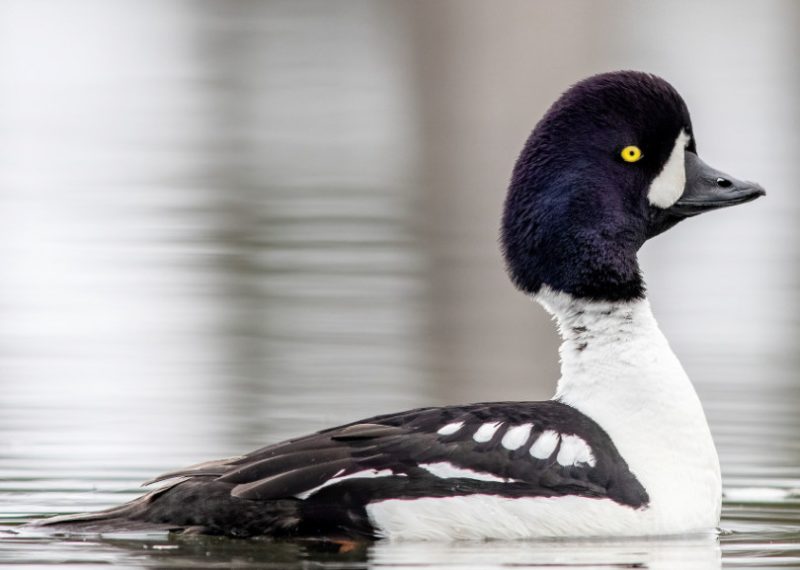
Barrow’s Goldeneye is a medium-sized diving duck found primarily in the mountainous regions of Oregon during winter and migration. They favor cold, clear lakes, rivers, and coastal bays. Breeding populations are more concentrated in the northern Rockies, but some may nest in northeastern Oregon.
Males are distinguished by a dark purple-black head with a crescent-shaped white patch between the eye and bill, along with black wings patterned with white spots. Females have yellow-orange bills and brown heads with pale bodies. Their bright yellow eyes stand out on both sexes.
These ducks produce a variety of soft whistles and grunts, particularly during mating displays. Barrow’s Goldeneyes are cavity nesters, often choosing old woodpecker holes or nest boxes. A fun fact: they are more territorial and less social than their close relative, the Common Goldeneye, often forming smaller, more isolated groups in winter.
Long-tailed Duck (Clangula hyemalis)
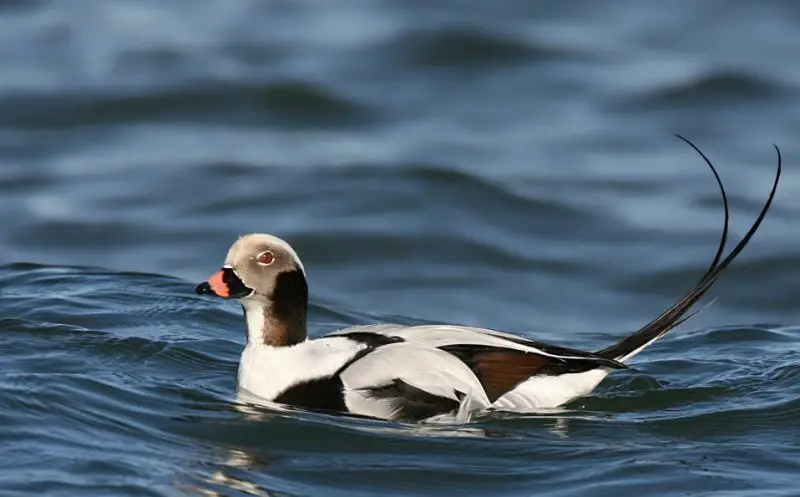
The Long-tailed Duck is an Arctic-breeding sea duck seen along Oregon’s coast in small numbers during winter. Unlike most ducks, they are more vocal and often found farther offshore, diving deeply in search of invertebrates and small fish.
Males are easily recognized by their elegant long tail feathers, striking black-and-white plumage, and unique facial markings. Females are brown and white with a short tail and plainer facial features. Both undergo dramatic plumage changes between seasons, which can complicate identification.
They are among the most vocal ducks, with males emitting a melodic yodeling call and various chatter. A fun fact: Long-tailed Ducks can dive deeper than almost any other duck species, reaching depths over 200 feet. This remarkable ability helps them feed on benthic organisms in cold, coastal waters.
Harlequin Duck (Histrionicus histrionicus)
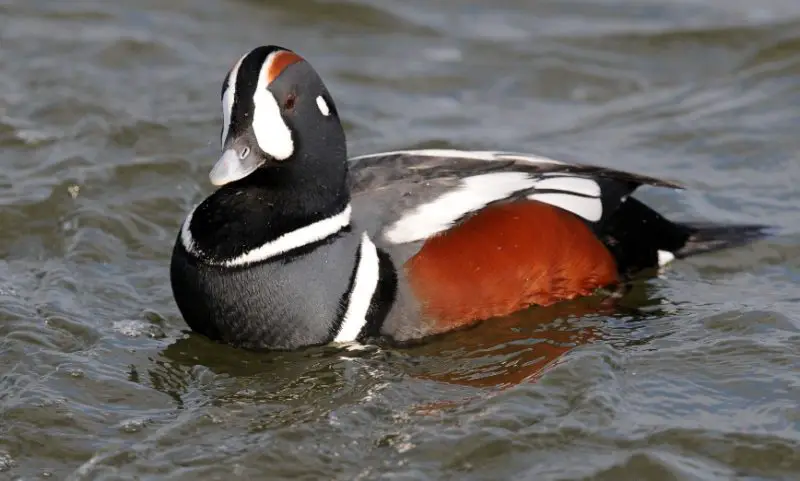
The Harlequin Duck is a small, vividly patterned sea duck that prefers fast-flowing mountain streams and rocky coastal areas. In Oregon, they can be spotted along rocky coastal cliffs in winter and in turbulent inland rivers during the breeding season, particularly in the Cascade and Coast Ranges.
Males are beautifully marked with bold white spots and stripes on a slate-blue background, accented by chestnut sides. Females are dark brown with subtle white facial patches and a compact build. Their streamlined shape helps them navigate rushing water with ease.
These ducks produce high-pitched squeaks and whistles, especially in social flocks or when alarmed. A fun fact: Harlequin Ducks are sometimes called “sea mice” due to their squeaky calls and are among the few ducks that breed in fast-moving streams, often diving and foraging in whitewater rapids.
Eurasian Wigeon (Mareca penelope)
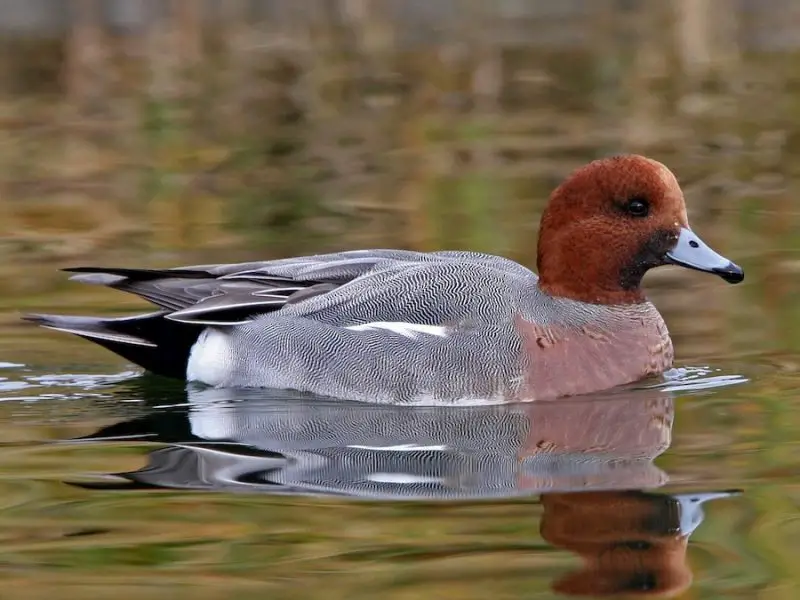
The Eurasian Wigeon is a rare but regular visitor to Oregon, often spotted among flocks of American Wigeon during migration and winter. Though not native to North America, small numbers of this Old World species arrive from Asia or Europe each year, especially in the Willamette Valley and coastal wetlands.
Males are distinct with a rusty head, creamy-yellow forehead, gray body, and pinkish breast. Females resemble female American Wigeons but are slightly darker and warmer in tone, with a more uniform face and subtle differences in bill shape. Hybrids between the two species are occasionally recorded.
Their whistling calls are similar to American Wigeons but are softer and more rapid. These ducks graze on grasses and aquatic plants, often seen on land or in shallow water. A fun fact: the Eurasian Wigeon’s regular presence in Oregon is due to migratory stragglers, making it a popular species for birders seeking rare finds in mixed flocks.
American Black Duck (Anas rubripes)
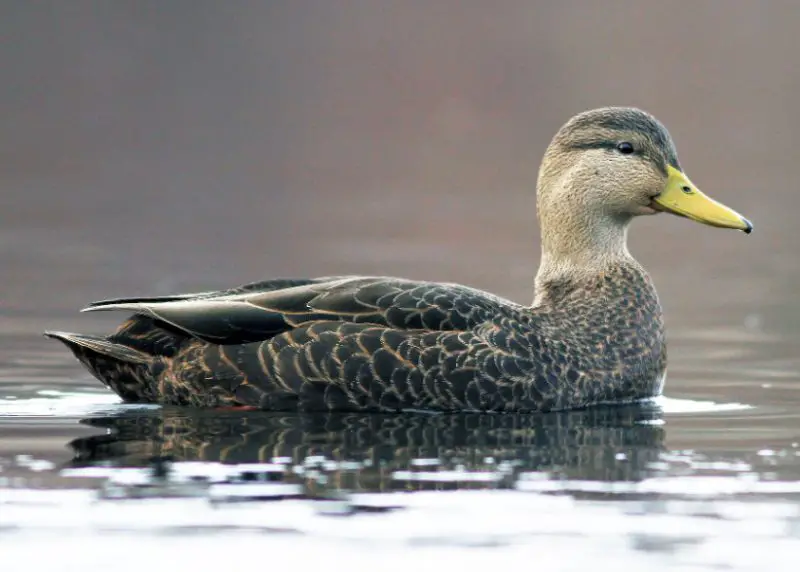
The American Black Duck is a large, dark-colored dabbling duck native to the eastern United States but very rarely seen in Oregon. When it does appear, it is typically a stray or vagrant, often found in freshwater wetlands or marshes alongside more common duck species during migration or winter.
Males and females both have a dark brown body with lighter brown heads, and they are often confused with female Mallards due to their similar shape and size. Their bill is olive to yellowish with a darker tip, and they have a distinct white underwing that shows in flight.
This species is generally quiet but may produce soft whistles and grunts during courtship. A fun fact is that American Black Ducks readily hybridize with Mallards, making identification sometimes challenging, especially outside their usual range. Their rarity in Oregon makes any sighting noteworthy for local birders.
Tufted Duck (Aythya fuligula)
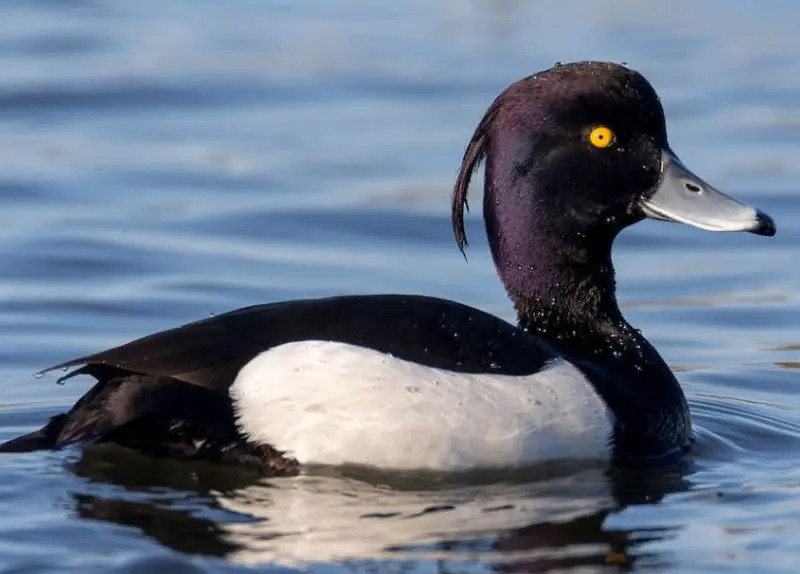
The Tufted Duck is a Eurasian diving duck that occasionally shows up in Oregon, usually as a rare visitor during migration or winter. They are more common in Europe and Asia, but vagrants sometimes cross into North America, often found in coastal bays or inland lakes.
Males are easily identified by their glossy black bodies, white flanks, and distinctive tuft of feathers on the back of their heads. Females are mostly dark brown with a smaller crest and less contrasting markings. Both sexes have bright yellow eyes and a blue-gray bill with a black tip.
Tufted Ducks are generally silent but may give soft whistles or grunts in social groups. A fun fact: they are expert divers that feed on aquatic invertebrates and plants by swimming underwater. Their occasional appearance in Oregon is a treat for birdwatchers who enjoy spotting rare and exotic ducks.
Falcated Duck (Mareca falcata)
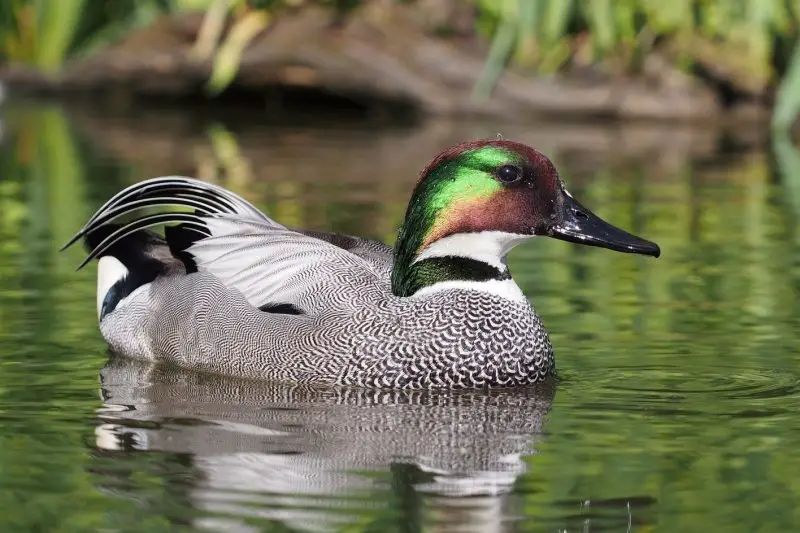
The Falcated Duck is a strikingly beautiful and extremely rare Asian species that has been recorded just a few times in Oregon. Known for its shimmering green and bronze iridescent plumage and long, falcate-shaped tail feathers in males, it is a coveted rarity for North American birders.
Males show an iridescent green head with elongated neck feathers, bronze back, and creamy underparts, while females are more subdued with mottled brown plumage. Their unique bill shape and plumage make them stand out from other dabbling ducks.
Though usually silent, the Falcated Duck can produce soft whistles and calls during breeding displays. A fun fact is that this species is considered Near Threatened globally due to habitat loss and hunting pressures in its native range. Its rare appearances in Oregon highlight the incredible journeys some migratory ducks undertake.
Baikal Teal (Sibirionetta formosa)

The Baikal Teal is a small, beautifully patterned duck native to East Asia and is one of the rarest duck visitors to Oregon. Its striking appearance includes bold facial markings and intricate patterns, making it easily distinguishable from other teal species.
Males have a distinctive pattern of black, white, and green on their faces with bright yellow eyes, while females are mottled brown with subtler markings. Both have a compact body shape and relatively short neck.
Baikal Teals are mostly silent but can emit soft whistles and chips. A fun fact is that they breed around Lake Baikal in Siberia and migrate long distances to wintering grounds in East Asia, with very occasional vagrants reaching North America. Their presence in Oregon is always cause for excitement among waterfowl enthusiasts.
Black-bellied Whistling-Duck (Dendrocygna autumnalis)
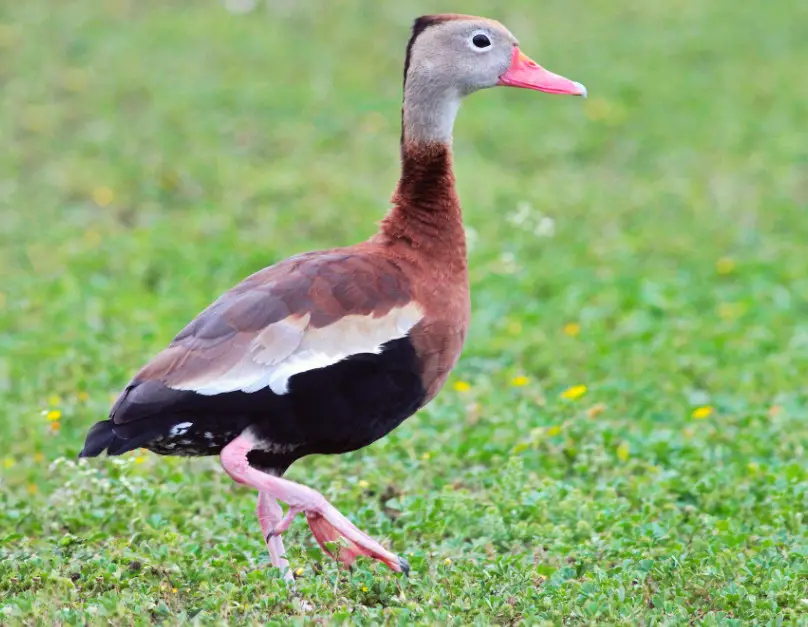
The Black-bellied Whistling-Duck is a distinctive and charismatic species rarely found in Oregon, mainly in the southern parts during warm months or migration. Known for its bright pink bill and long legs, it prefers freshwater ponds, marshes, and agricultural fields.
Adults have a rich chestnut body, black belly, and bold white wing patches visible in flight. They have a long neck and often perch in trees, a behavior unusual among ducks. Their bright red eyes and pink bill add to their striking appearance.
True to their name, these ducks produce loud, clear whistling calls that carry over long distances. A fun fact is that Black-bellied Whistling-Ducks are highly social and often nest in tree cavities or nest boxes. Their presence in Oregon is sporadic but always memorable due to their loud calls and unusual appearance.
Fulvous Whistling-Duck (Dendrocygna bicolor)
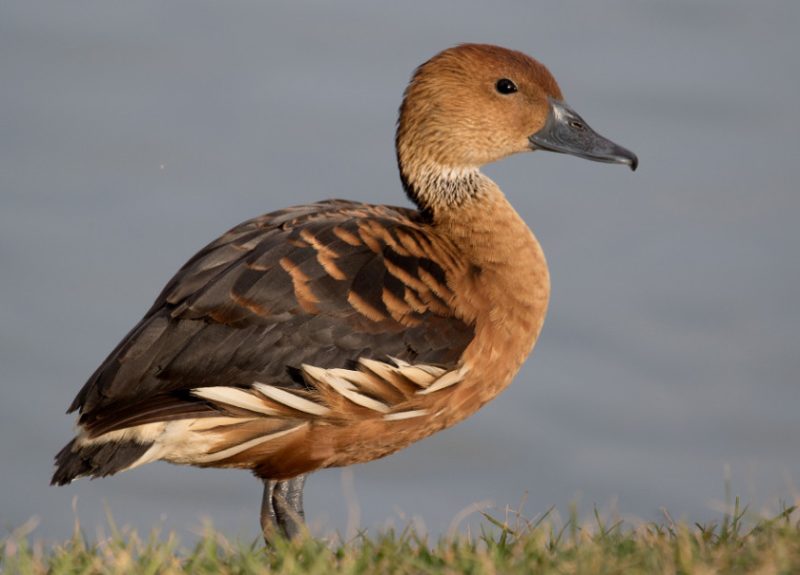
The Fulvous Whistling-Duck is another rare visitor to Oregon’s wetlands, sharing similar habitat preferences with the Black-bellied Whistling-Duck but appearing even less frequently. It favors shallow freshwater marshes, ponds, and flooded fields.
They have a warm, tawny brown body with darker wings and a slightly darker head. Unlike the Black-bellied, their bill is dark and less prominent, and their overall shape is more rounded and chunky. Both sexes look alike and have long legs.
Fulvous Whistling-Ducks are vocal, emitting a high-pitched, repetitive whistle that sounds quite musical. A fun fact is that they feed mostly on seeds and aquatic plants and are known to roost in large communal groups at night. Their rare sightings in Oregon make them a highlight for birders hoping to catch a glimpse of uncommon waterfowl.



